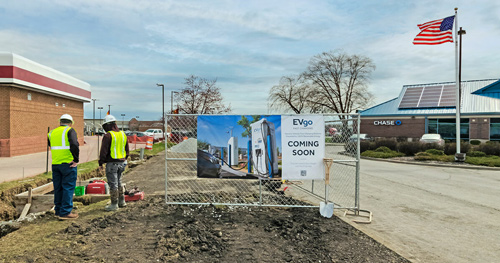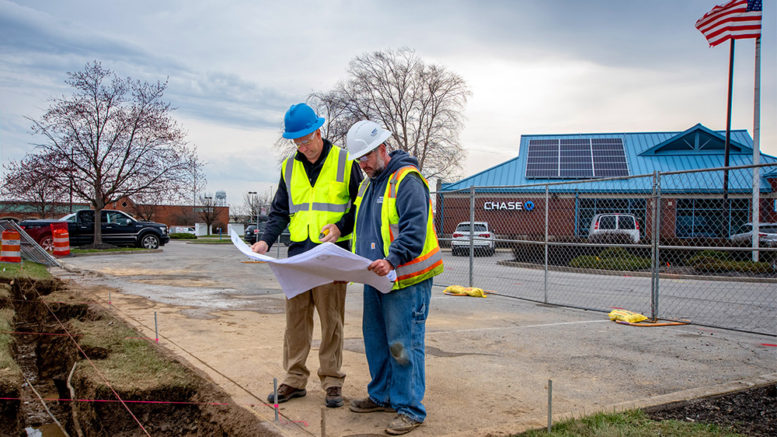Chase Bank announced Thursday that it will pilot public fast electric vehicle charging stations across 50 of its U.S. branches beginning this summer. This adds to the firm’s efforts to promote environmental sustainability in its retail locations as it also aims to expand on-site solar power to approximately 400 additional branches by the end of 2022.
Locally, the Chase branch located at 14801 Thatcher Lane in Carmel is getting fast charging stations. That’s just north of 146th Street on the east side of U.S. 31.
To bring the charging stations to branches, the bank partnered with EVgo, a pioneer and innovator in transportation electrification. The company builds, owns and operates the nation’s largest network of public DC fast chargers, powered by 100 percent renewable energy.
Charging stations at branches bring added convenience to customers, allowing them to set up a meeting with a banker and conduct their banking needs while charging their cars.
“We’re always listening and taking feedback from customers when it comes to the branch experience, and we know environmental sustainability is important to them,” said Jennifer Roberts, CEO of Chase Consumer Banking. “We’re excited to work together with EVgo to bring electric vehicle charging to our branches and offer this important service to thousands of customers and their communities.”
Fast chargers will be installed at select Chase branch locations in states like California, Indiana, Illinois, New York, Oregon, and Pennsylvania, offering thousands of drivers access to 100kW and 350kW chargers that can charge vehicles as much as 80 percent in 15 to 45 minutes, depending on the vehicle. The bank expects to have all stations available for use by the summer of 2023.
Once installed and operational at the 50 branch locations, EVgo estimates chargers will deliver up to 9.4 million kWh annually to provide nearly 30 million EV miles charged, equivalent to avoiding 12,000 megatons of CO2 and planting approximately 196,000 trees each year.
“Reducing the amount of pollution from tailpipes will have real benefits for consumers and communities, and increasing the availability of convenient public fast charging gives more drivers peace of mind to switch to electric,” said EVgo CEO Cathy Zoi. “Having access to fast charging in everyday settings of life – the local bank being a great example as well as an important community staple – is truly key. We’re excited to partner with Chase, and together with our shared values, we look forward to working together on decarbonizing transportation and improving our communities.”

Photo courtesy EVgo
Transportation is the largest source of greenhouse gas emissions in the United States. While electric vehicles promise to be the future of transportation – projected to reach 145 million on the road by 2030 – the lack of charging infrastructure is one of the biggest hurdles to EV adoption. This collaboration will help scale the EV industry in communities across the U.S.
The installation of EVgo charging stations, powered by 100 percent renewable energy, builds on JPMorgan Chase’s efforts to promote environmental sustainability and the adoption of renewables, including in its thousands of retail branches across the U.S.
In the coming months, Chase will also continue to expand on-site solar power at its branches across the U.S. To date, Chase has added solar installations at over 350 branches in Michigan, Arizona Nevada, and California, with additional projects underway in Florida, Ohio, Colorado, Illinois, Louisiana, Indiana and New York. Chase’s goal is to complete solar installations at approximately 400 additional branches plus 125 carports – solar panels installed above parking lots – by the end of 2022. When the project is complete, it will provide over 25 megawatts of solar capacity, or enough to power approximately 3,200 homes. This effort is part of the firm’s strategy to minimize the environmental impact of its operations and will contribute toward the goal of reducing greenhouse gas emissions from its buildings, branches and data centers by 40 percent by 2030.

